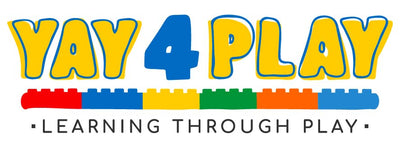We are often asked by early childhood and family day care centre educators what is so special about using the Six Bricks method. What makes it so unique? What’s the difference between using the Six Bricks concept as compared with simply buying a box of LEGO® bricks and allowing children to play with them as they wish?
There’s a whole lot of valid, well-researched reasons why the Six Bricks way is practical and easy to incorporate into any classroom practice. Here’s just 7 of these good reasons why Six Bricks should be part of your approach to learning:
1. The research that sits at the foundation of the methodology is based on the central concept that play is a central way in which children learn. It removes the fear of failure – after all, when you play and things don’t work out or go exactly according to plan, this is a great opportunity to simply try again.
2. The method is simple, cost-effective and scalable depending on the developmental level of each child. A set of bricks goes a long way – the same set is used throughout the year and children never get bored with the variety of educational activities that are contained within the kits.
3. The Six Bricks method mirrors all the benefits of having playful experiences: The method encourages joyful learning and children find meaning in what they do and learn. They are also active and engaged in solving problems and experimenting. Finally, there is social interaction as they communicate with other children.
4. And naturally, it’s great to know that in addition to all these amazing benefits, children are strengthening their skills to underpin the knowledge they build in the formal curriculum. It’s a very long list of skills:
- Perceptual skills to notice for example patterns and differences.
- Numeracy and literacy skills
- Social and emotional skills to improve communication and develop emotional intelligence
- Working memory and the ability to listen to instructions
- Inhibitory control to inhibit impulses to select more appropriate responses
5. The method is so flexible in that it lends itself both to reinforcing concepts in the curriculum as well as energisers during the day. Once these short and sharp activities engage children, they are more likely to be in ‘flow’ and open to new forms of learning.
6. The method is based on the bricks as manipulatives – physical objects that children can engage with in a hands-on way. Instead of concepts such as in maths being abstract, children can move from the concrete into the abstract. Children use the activities as a way of touching, feeling and working with the manipulatives so that they truly internalise and apply the concepts.
7. There are literally hundreds of ways in which these educational activities can be used throughout the day or during after school care hours. The repetition helps to develop mental readiness to focus and concentrate – and also reflect and learn through experimentation. Children are attracted to the bright coloured bricks and quickly engage as they manipulate these concrete objects to construct knowledge.
Those are just some of the reasons why every school needs the Six Bricks Methodology as a key component of their daily learning routine.
